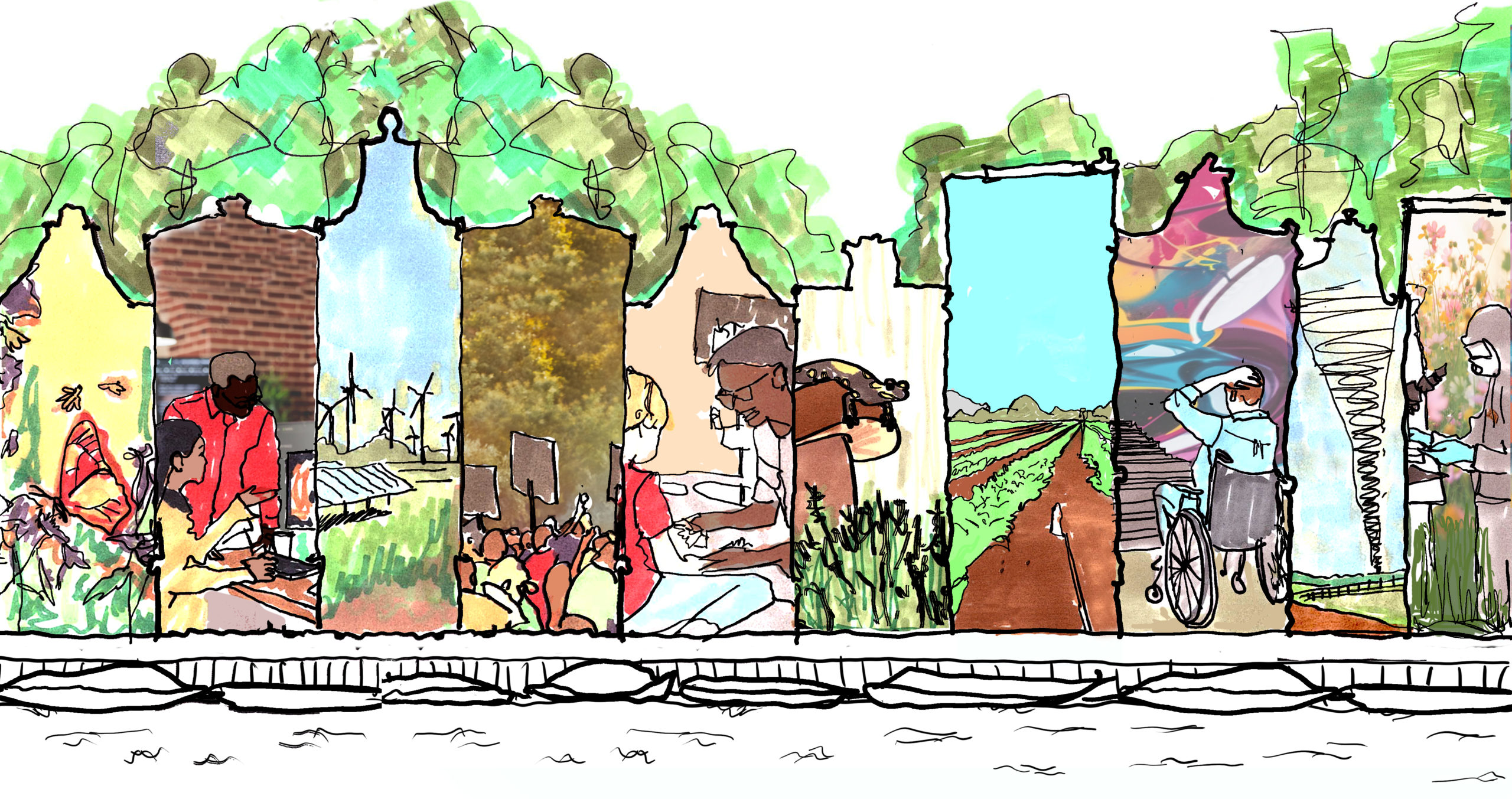Conference coaching
A coaching session to help you step in with greater ease
Academic conferences are tricky social situations. We can’t be certain what will unfold as we show up to present our work and connect with others. And evaluation and comparison are lurking around every corner. People’s individual reactions to this differ, but it’s rare for anyone – regardless of academic rank or years or experience – to come away from a conference not having felt insecure, awkward, unseen, or otherwise ill at ease at some point.
During the EASST-4S 2024 conference, delegates had the opportunity to participate in a coaching segment that addressed conference-related stress from the perspective of listening to and caring for the nervous system.
Combining individual empowerment with a collective orientation to “making and doing the conference-environment together,” the segment consisted of live preparatory sessions via Zoom, daily coaching emails, and a ‘tricky moments’ bingo game to help lighten the occurrence of common unpleasantries.
Its aim was to help delegates feel more at ease while presenting and connecting; less thrown off when finding themselves unsettled by things that commonly happen, and freer to enjoy themselves at the conference
About the speaker

Catelijne Coopmans is a former Science and Technology Studies scholar who now works as an academic life coach.
Her clients work with her on how to foster personal sustainability, how to be bold in pursuing what they really want to do or say, how to navigate transitions, and how to reclaim their writing. She also delivers online and in-person workshops for departments and research centres in Europe, the UK, Asia, and North America.
Two basic premises on which her coaching is based are (1) there are infinite ways to approach academic life, and the task of each person is to cultivate the ways that truly work for them, (2) academic lives aren’t only lived out of the head but out of the whole body: taking this seriously opens new possibilities for thinking, writing, speaking, decision-making, and collaborating.
—
In 2019, after becoming practised in body-oriented coaching and beginning to understand freeze, fight and flight reactions through the lens of the Polyvagal Theory, Catelijne attended the 4S in New Orleans. Inspired by her observations there of bodies presenting and connecting, she began to develop the coaching segment that you can now take part in at this EASST-4S.
For more about Catelijne, see https://catelijnecoopmans.com/about/.
To contact Catelijne, please write to catelijne(at)catelijnecoopmans.com.
Reactions
“To have the dysregulation that conferencing occasions acknowledged was really groundbreaking – for me, and no doubt for others too. It is like being seen after many, many years. The act of publicly saying this and of structuring a coaching segment around it, I found profoundly validating.” (EASST-4S 2024 participant)
“My heartfelt gratitude for this offering, both to Catelijne for her vulnerable sharing and ability to point to common experiences as normal ones – and to the organizers for their consideration of the importance of such an offering. It makes me proud of my academic community, knowing that it integrates such consideration and care for the emotional well-being of its members – and that it is able to recognize that there is much pressure in academic conferences (and also enjoyment, but … we need first to address the stressful parts to reach the enjoyments, or at least, I do ;-)” (EASST-4S 2024 participant)
“Dear Catelijne, I am infinitely grateful for what you offered us with the session the day before the conference, the e-mails and the conference bingo. It was very soothing to be able to comfort my nervous system, to listen to it with awareness, and to take its needs into account. I’d also like to thank the organizers for inviting you, and more broadly for conveying this sense of welcome and paying attention to each other, at the Opening Plenary and even before the conference in emails. I’ll have very warm memories of this conference, of your coaching, and of a sense of welcome at the VU Amsterdam.” (EASST-4S 2024 participant)


